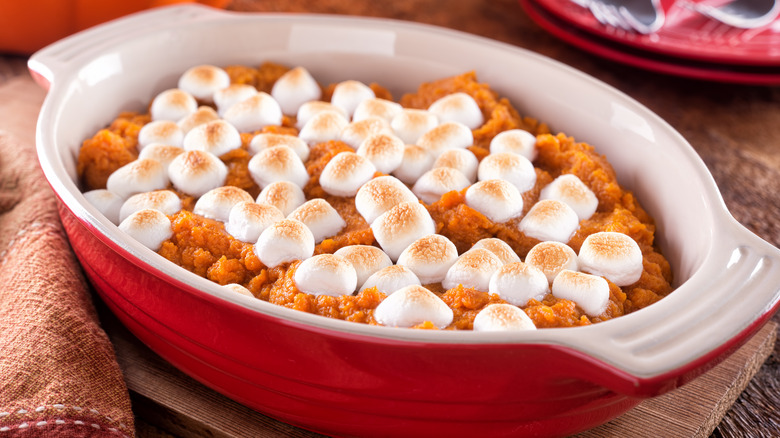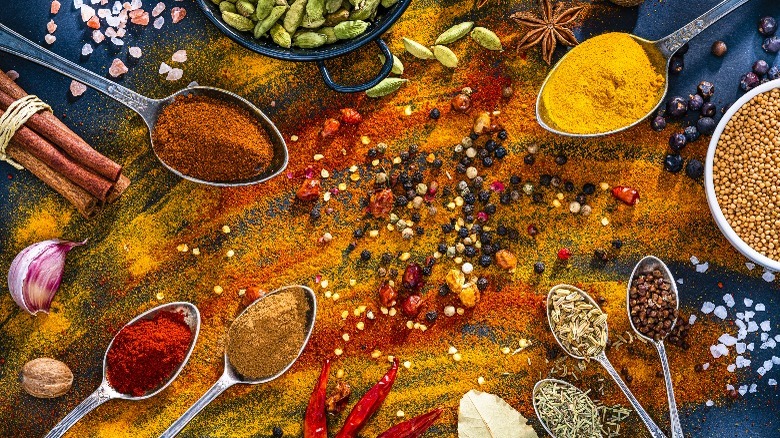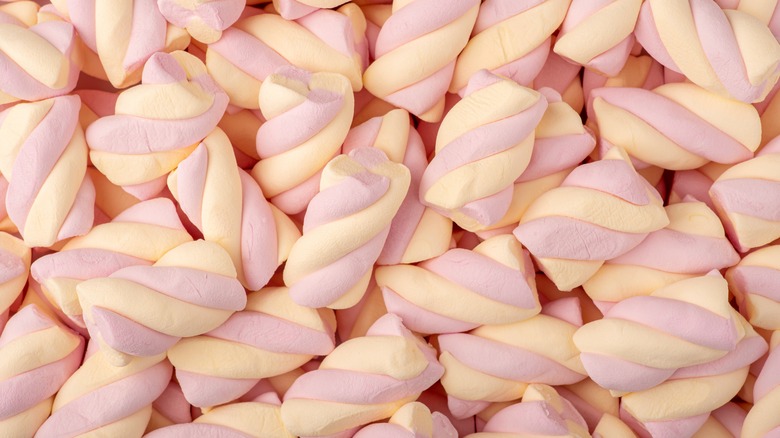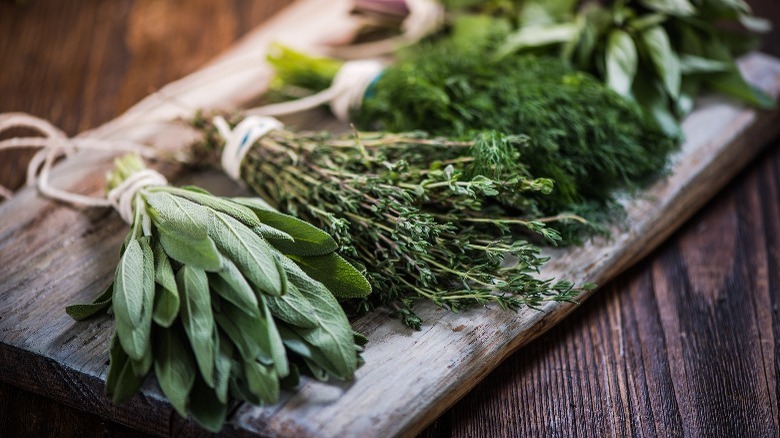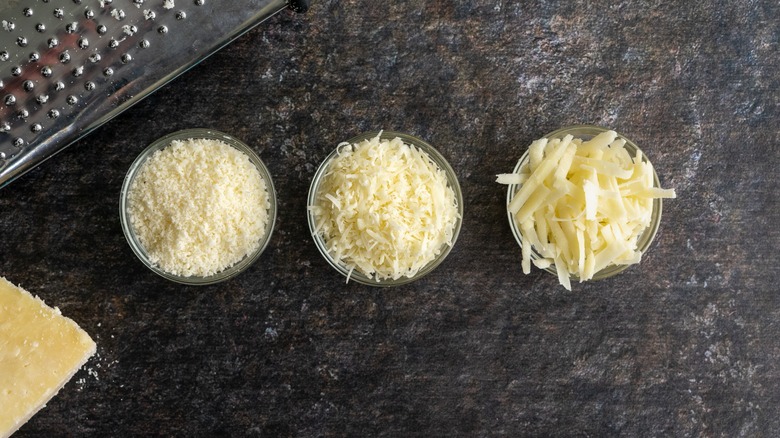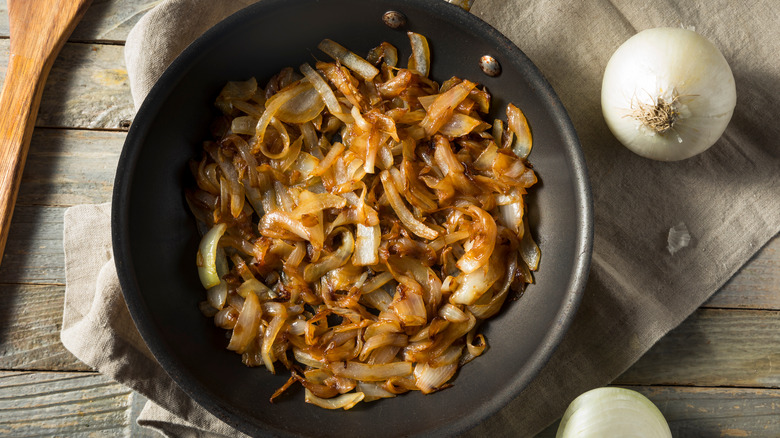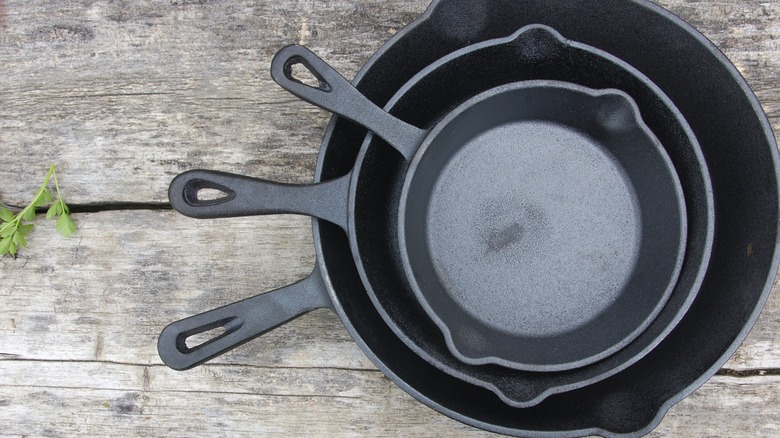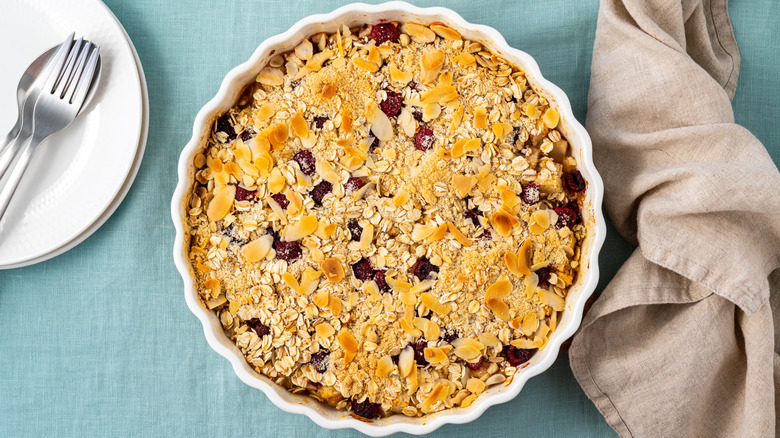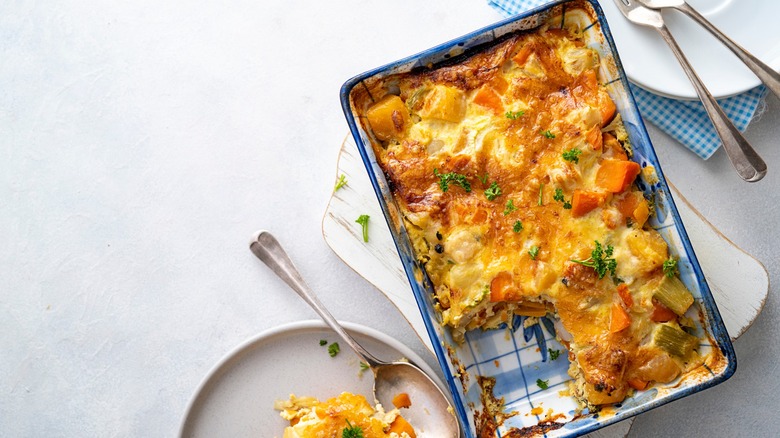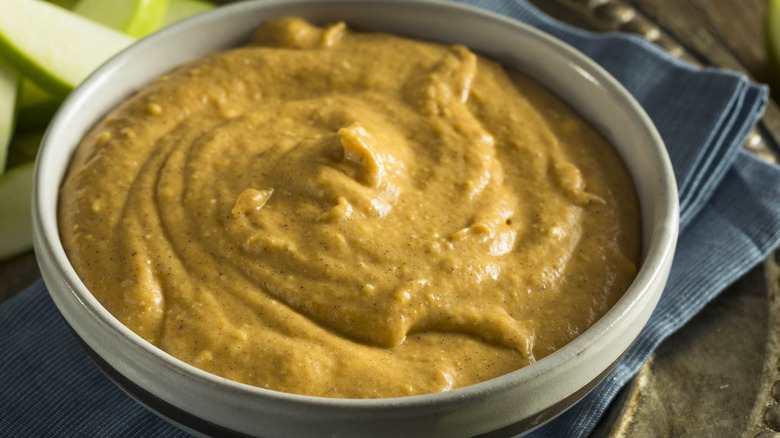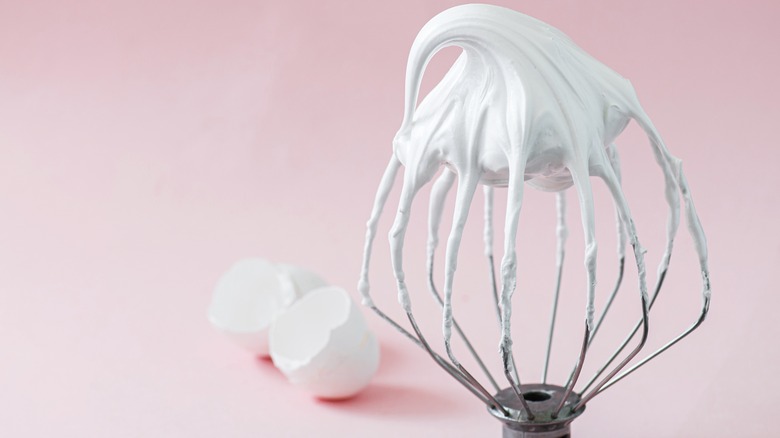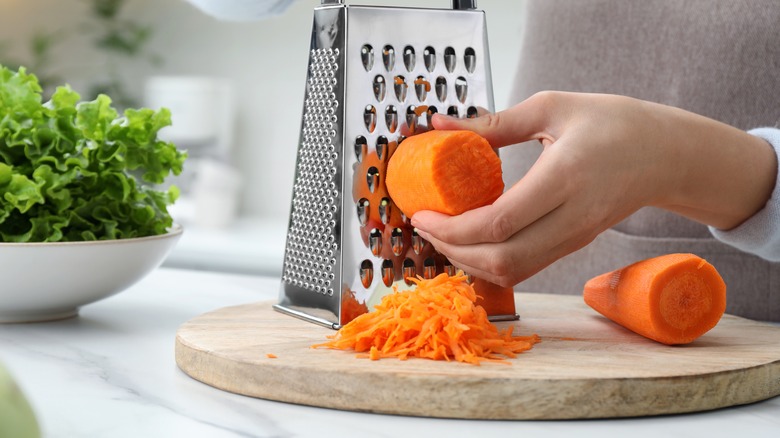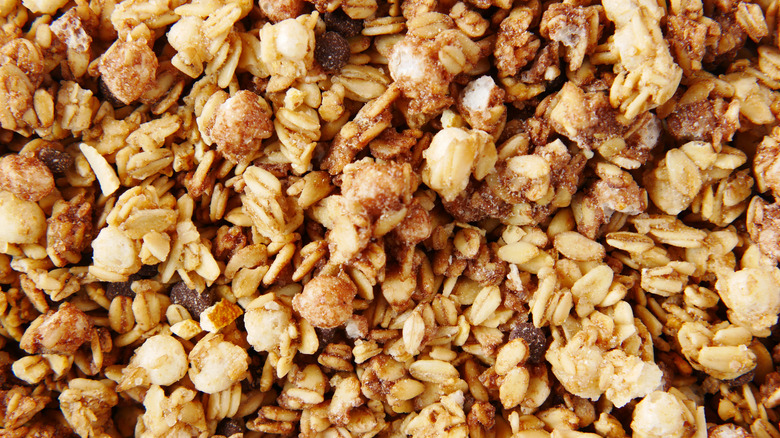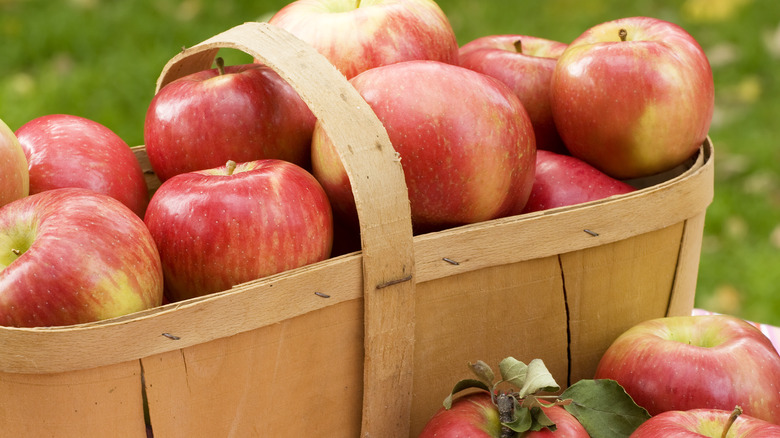13 Ways To Upgrade Your Sweet Potato Casserole
Sweet potato casserole is a familiar and popular favorite, especially around the holidays, but it can be divisive: while some love the sweet notes of the classic version of the recipe — containing baked sweet potato, sugar, cinnamon, and butter — others prefer to stick to a savory version of the dish. Some sweet potato casseroles are known for a roasted marshmallow topping, while others lean into a topping of nuts and streusel.
Sweet potatoes have a long culinary history and have long been used in a variety of dishes. From candied yams to sweet potato fries, sweet potatoes have a naturally earthy profile that lends them to endless flavor combinations and applications, both sweet and savory. That's why sweet potato casserole works so well; the dish is a blank slate that lends itself to many tips and tricks for a range of flavors, textures, and tastes. From a nutty-sweet crunch to gooey marshmallows, there are many ways to elevate this beloved dish. Here are a few ways to upgrade sweet potato casserole.
1. Spice it up
Just a pinch of spice goes a long way to add an extra kick to sweet potato casserole! These spices can also help to brighten the overall dish.
Seasonings such as cayenne pepper are naturally hot and smoky, but they are also a wonderful complement to root veggies like sweet potato. Cayenne pepper is best suited for those who prefer higher heat levels, while paprika is less hot and slightly sweet. Aleppo pepper has a deep, rich flavor that's milder than cayenne but slightly hotter than paprika. If you're feeling adventurous, you can try adding a combination of paprika and cayenne to your sweet potato casserole. For some added depth, add a pinch of cumin and nutmeg to your sweet potato mixture for a unique balance of warm spices.
Toasted and candied nuts, like pecans, are a complementary topping for sweet potato casserole and a great way to incorporate your favorite spices. Whether your dish is sweet or savory, adding a bit of spice to a nutty topping will take it to the next level.
2. Change the marshmallows
Getting creative with that classic marshmallow topping is a fun way to switch things up in a sweet potato casserole. Marshmallows were first paired with sweet potatoes in the early 20th century, when the manufacturer Angelus Marshmallows commissioned a booklet of recipes that incorporated marshmallows, in an attempt to increase sales of the candy. At the time, marshmallows were a new invention and a novelty in themselves. But today, you can easily find more exciting marshmallow flavors at the grocery store.
Most conventional marshmallow brands, like Jet-Puffed, make a range of flavors, including vanilla. These brands also make different sizes of marshmallows, such as jumbo and mini marshmallows, which you can use to create various designs. The companies even sell different colored marshmallows, which can be used to incorporate a different type of charming visual appeal. All of these options mean extra fun for those who love a melty topping of marshmallows for their sweet potato casserole.
3. Add herbs
If sugary sweetness is the first thing that comes to mind when you think about sweet potato casserole, think again; a savory potato casserole is just a few aromatics away from stealing the show! Skip the sugar and lean into the savory side of this dish with fresh or dried herbs. These herbs can complement the earthiness of sweet potato especially well, while adding layers of savory flavor.
If you are using fresh herbs, it's important to stick to woody varieties (rather than tender ones) and use just the leaves. Woody herbs, like rosemary and thyme, are tougher than tender herbs, such as basil and cilantro. This means woody herbs better stand up to high heat when cooking.
Dried herbs are also useful in this application. Like woody herbs, they tend to be sturdy, meaning they won't wilt during cooking. Feel free to use an Italian seasoning blend that often includes dried herbs such as basil and oregano. You could even use a Herbes de Provence blend. This dried herb blend often incorporates thyme and rosemary. When using dried herbs and powders, less is more. Also, remember to taste as you go.
4. Introduce cheese into the dish
Believe it or not, cheese and sweet potato play nicely together. It's popular to blend the two while making comfort food classics like sweet potato mac and cheese, but the pairing is also a great way to elevate a casserole. Adding cheese imparts nuttiness, tang, and creaminess to sweet potato casserole.
It's best to stick with soft, full-fat cheeses or dry, low-moisture cheeses — both of these work well under high oven temperatures. If you want to use creamy cheese, simply mash roasted or boiled sweet potatoes with goat cheese, cream cheese, or even a herby cheese spread like Boursin, and proceed as usual. If you want to use a dry and nutty cheese — like parmesan, Pecorino romano, or Asiago — make sure to finely grate them fresh to incorporate into the mixture smoothly.
Just remember: for a sweet potato casserole that includes cheese, it's best to reduce the amount of sugar, and omit the marshmallows. Lean into the cheesiness and consider a savory topping. You can even sprinkle the top of your sweet potato casserole with herbs and seasoned bread crumbs to add a nutty, savory crunch.
5. Try using caramelized onions
We promise this upgrade is worth the effort! Unlike raw or regular cooked onions, caramelized onions taste gooey sweet, with a uniquely aromatic tang. This is because the process of caramelizing onions — or cooking and breaking their natural sugars down over low and slow heat — brings out a smoky sweetness. These flavors instantly add depth of flavor to any dish, but especially to sweet potato casserole, because sweet potatoes similarly contain natural sugars that intensify when cooked. To incorporate caramelized onions, blend them into a puree and fold them into the sweet potato mixture, or arrange them over the top of the dish before baking.
Since the process of cooking onions this way makes them slightly sweet, any onion will do, but if you want to lean into sweet flavors, Vidalia onions are naturally the sweetest. You might want to hold back on the marshmallows or stick with a nut topping if you're using caramelized onions — no matter how sweet the onions get, onions and marshmallows don't mix well.
6. Dish it out differently
Have you ever wondered why so many Pyrex casserole dishes are clear? These casserole dishes were first manufactured with clear glass so that you could watch your dish baking throughout the process. Today, modern technological advancements in food thermometers and ovens allow us to know when something is cooked. Being able to see our casseroles from all directions isn't as necessary as it once was.
There is a time and a place for a classic clear Pyrex dish, but there isn't a reason why you can't experiment and play around with all sorts of oven-safe vessels of different shapes, colors, and designs when baking a sweet potato casserole today. Try swapping your Pyrex for a cast iron skillet the next time you bake a sweet potato casserole. Cast iron is known for even heat connectivity, making for a deliciously even and consistent bake — plus, it looks great when you display your casserole.
7. Use a crumb topping
If you're not into using marshmallows for your sweet potato casserole topping, try using a buttery, crunchy crumb topping instead. A crumb topping — or a streusel — often has three basic elements: flour, butter, and sugar. However, you can incorporate other flavors and treats to make these toppings super special, like crumbled cookies, spices, or toasted nuts.
The best part about upgrading your casserole with a crumb topping is that you can easily make it your own. A streusel tends to contain more flour, while a crumb topping tends to contain more sugar. Either way, you can't go wrong as long as you include butter and make sure the mixture is easily crumbled!
Add some spices, and be sure to choose oily, fall nuts (like pecans, walnuts, and hazelnuts) that taste delicious when toasted. If including cookie crumbs, opt for drier cookies like vanilla wafers or ginger snaps. Once tossed with butter and sugar and baked along with the casserole, flourishes like these will make your sweet potato casserole golden brown and irresistible.
8. Make it loaded
If you're the one who's ordering sweet potato fries "for the table" and then eating all of them — this recipe is for you. No one said sweet potato casseroles had to stay sweet, and what better way to elevate it than to pile it high with all the best savory toppings?
A dish often qualifies as "loaded" if it's topped with ingredients like green onions, cheddar cheese, and sour cream. While this is common for baked potatoes, many other recipes can be loaded as well. There's no reason why a sweet potato casserole can't be loaded, too.
Lean into the savory qualities of this upgrade by adding salt, black pepper, and smokey sweet paprika to the sweet potato mixture. Sprinkle the dish with cheddar cheese before baking. When it's time to serve, "load" your potatoes with all sorts of other savory toppings, such as bacon or black beans.
9. Dive into a dip
Already-made sweet potato casserole is the perfect base for a sweet dipping treat. If you have ever had a cream cheese pumpkin dip, you'll love how easily sweet potato puree — made from blended sweet potato casserole — lends itself to the same sweet, earthy, and spiced flavors. All you need is a blender or food processor, your favorite serving bowl or dish, and something for dipping.
First, blend leftover sweet potato casserole in a blender or food processor. Then, stir the sweet potato mixture with something creamy (like whipped cream cheese, Greek yogurt, or heavy cream) until you reach your desired consistency. Next, add sugar (or maple syrup) and your favorite spices. Finally, transfer it to a bowl, top with extra whipped cheese mixture and a drizzle of maple syrup or honey, and serve with graham crackers, ginger snaps, or similarly structured cookies or biscuits.
10. Make it merry with meringue
Meringue is perfect for kicking your sweet potato casserole up a notch. A light, fluffy, sugary meringue topping is often used to elevate desserts like sweet potato or pumpkin pie, so there's no reason why it shouldn't also take sweet casserole to the next level, too.
While there are three types of meringue, there are two types of soft whipped meringue that are most commonly used for dessert toppings, and both involve a combination of whipped egg whites and sugar. These are the types you'll want to use for this application. Classic French meringue is the easiest to make, but it doesn't hold up as sturdily to time or temperature. Swiss meringue takes an extra step or two, but it holds its shape well and looks beautiful, making it the better option here. Swirl it or pipe it onto the top of your favorite sweet potato casserole, broil it in the oven on high until toasted and golden brown, and your dinner guests will be amazed.
11. Try shredding the sweet potato
While the traditional style of sweet potato casserole consists of a baked puree or souffle, you can upgrade it by making the dish with freshly shredded sweet potato. It doesn't matter whether you grate or shred your sweet potato. Breaking up the flesh of the potato into small pieces (rather than pureeing it) allows for a wider range of textures when baked.
Shredding or grating also allows the starches of the potato to break down, while still holding some form. Use a box grater to shred or grate sweet potato, and toss it together with sugar, flour, egg, and bake until tender yet toothsome. Alternatively, incorporate shredded or grated sweet potato as an addition, which can be folded into a more traditional sweet potato puree for a combination of textures. This will allow you to enjoy some smooth and chunky pieces simultaneously while enjoying your casserole.
12. Gussy it up with granola
Every sweet potato casserole needs a decadent and delicious topping. If you're short on time, store-bought granola is a quick and easy way to elevate a traditional sweet potato casserole. Simply toss it with melted butter and sprinkle it over top before baking. Many granolas also include dried fruit, which not only provides some tartness, flavor, and texture when baked but also adds some visual intrigue.
While marshmallows and brown sugar are signature toppings for classic sweet potato casserole, there's a lot of room to elevate the classic textures and flavors of sweet potato casserole by incorporating granola. Think of your casserole as a blank slate for any sort of flavor profile. If you're feeling adventurous, add more nuts. If you like sweetness, try drizzling the top with maple syrup or honey. Classically festive and sweet flavors like vanilla and cinnamon will pair best with the granola topping.
13. Incorporate roasted apples
Apple and sweet potato is a match made in heaven. While the two foods are often paired together in simple roasts and bakes, apples are often incorporated in squash or sweet potato dishes to add balanced and complimentary sweetness without additional sugars. Adding an apple to a sweet potato casserole similarly offers earthy sweetness, brightness, and depth.
Tart apples with thin skins (like Honeycrisp apples) hold up to high-heat roasting and don't require any peeling. This makes them very easy to incorporate into your casserole recipe. You can toss slices of apple along with sweet potato and roast them together. Or, for a blended version, whip sweet potatoes and apples together, then incorporate the mixture into the casserole before you put it into the oven. If you don't have any Honeycrisp apples handy, don't worry. You can select a similar tart variety, like Pink Lady, Fuji, or Gala apples.
